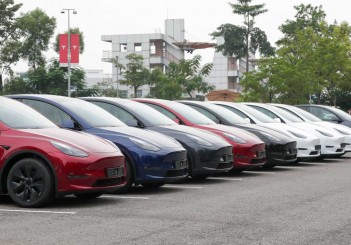The goal at the race, which takes place on June 24th in Colorado Springs, CO, is to break the record in the class for electric prototypes, which currently stands at 8:57.118 minutes.
“The start line is located at an altitude just above 9,000 feet, with the finish at 14,115 feet above sea level. The low air pressure up there means that the aerodynamic conditions are different to those at a racetrack on flat land,” explains François-Xavier Demaison, Technical Director at Volkswagen Motorsport and the man responsible for developing the I.D. R Pikes Peak as project manager.
Unlike other racing disciplines though, the Pikes Peak race features relatively open regulations, giving the engineers far more leeway to design the chassis and rear wing of the racecar.

During the winding 12.4-mile drive to the summit of Pikes Peak, a top speed of around 155 mph is reached—relatively low for a prototype like the I.D. R, as it could theoretically go far faster.
“For this reason, we concentrated mainly on achieving optimal cornering speeds. The entire chassis is designed to generate as much downforce as possible, without causing too much aerodynamic drag,” says Demaison.
The most visually striking result of this strategy is the oversized rear wing on the I.D. R Pikes Peak. “The altitude on Pikes Peak means that the air we are driving through is on average 35 percent thinner. As a result, we lose 35 percent of our downforce compared to a racetrack at sea level. The huge rear wing allows us to compensate for some of this lost downforce,” explains Willy Rampf, technical consultant to the project with years of Formula 1 experience. “The imaginative aerodynamic development means that we will still achieve maximum downforce greater than the weight of the car during the hill climb.”
With its two electric engines, which together generate 500 kW (671 horsepower), the I.D. R avoids the cooling issues that face combustion-engined vehicles.
The first test run on the original route is planned for the end of May.










